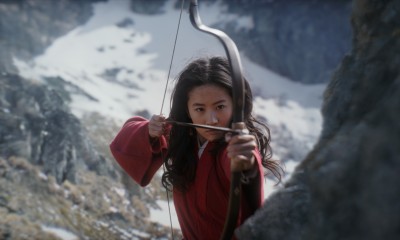The New Zealand extras and New Zealand in general were great. The level of interest and enthusiasm were consistently high, in part I think due to the shared ANZAC legacy between Australia and New Zealand but also just down to the people involved. Given the content called for a high range of emotions to be shown on screen the results were spectacular. The fact that visitors have literally left the Sir John Monash Centre in tears speaks volumes for efforts of everybody involved
Telling the story of the Australian Flying Corps led WildBear Entertainment to New Zealand where director Peter Jackson has one of the world’s largest collections of First World War fighter planes.
“Once we had seen the full extent of the WW1 militaria collection available between Wingnut and the Vintage Aviator we immediately started looking at what it would take to move our primary shoot to New Zealand to get access to it. What we didn't realise at the time was that doing so would also enable us to find AAA quality crew. Their flexibility and willingness to step outside of the big studio mindset to help us deliver more than two and half hours of high quality content for a project of such cultural significance on what by comparison was a very small budget really made a substantial difference to the Sir John Monash Centre.” - James Sutherland, Producer, WildBear Entertainment
WildBear Entertainment is one of Australia’s leading producers of factual content for the domestic and international TV markets. They created more than 60 individual and memorable films and media pieces for the new Sir John Monash Centre in Villers-Bretonneux, France.
The centre tells Australia’s story of the Western Front in the words of those who served. The footage now plays via 184 screens on every wall and the ceiling of the Sir John Monash Centre, an immersive experience designed to transport visitors to the battlefield including an IMAX experience and augmented reality.
New Zealand locations
In terms of locations we were very fortunate to have found both Masterton and Oamaru. Both of these provided features or assets that we could not easily find anywhere else. Working with the local authorities and local businesses at both locations was straightforward which meant we could focus all of our time on getting on screen results
To tell the story of the Australian Flying Corps producers were drawn to the Wairarapa region in the lower North Island. Here at Masterton’s Hood Aerodrome, Academy Award winning director Peter Jackson houses one of the world’s largest collections of First World War aircraft.
We were able to base the whole production at the aerodrome - which made everything very easy in terms of access.
Jackson’s company; The Vintage Aviator, is a certified restorer and manufacturer of military aircraft, including the German Fokker Dr. 1 Dreidecker and the British Sopwith Camel, which was used extensively by Australian pilots in France. The Warbirds at Masterton, near Wellington, are in perfect working condition and returned to the skies to film aerial combat scenes for the Sir John Monash Centre.
The production were able to utilise Jackson’s aircraft, vehicles and tanks, along with a section of the aerodrome recreated as the Western Front.
Line Producer Judith Trye says the large airfield provided the ideal location because it has low levels of flight activity, extensive preparation facilities and plenty of space to film with uncluttered backdrops.
Crew also filmed in the South Island town of Oamaru, home to some of New Zealand's best preserved Victorian streetscapes.
The Victorian buildings made it the perfect location to portray the war-torn village Villers-Bretonneux. For a week, roads were closed off and local men dressed as Anzacs engaged in fierce battles.
The town’s versatility also meant it could be transformed into Le Hamel, Paris and London for other scenes.
Director Serge Ou says Oamaru was selected as a filming location due to its diversity.
''Oamaru provided this amazing palette to work with. All of the elements I wanted to tell in the story are here. It doubles for London, about four French villages and a couple of towns. It's such a wonderfully flexible environment to shoot in. It also provides an opportunity to showcase a lot of the elements of the story.''
These scenes, and many others will be told via 184 screens on every wall and the ceiling of the Sir John Monash Centre’s immersive gallery.
New Zealand extras
The support we've got from New Zealand has been phenomenal. We've cast a lot of locals and everyone has risen to the occasion and been incredibly enthusiastic. For me, that makes it a so much richer experience.
They're delivering
stuff as good as actors. It's been impressive
Bringing the Australian Imperial Forces to the screen required great attention to detail in casting, costumes and make-up. A key part of the production in New Zealand was the use of locals as extras.
Production looked for men from each area, to transform into Australian diggers and German infantrymen. Many came from schools, as a lot of the young men who went to the Western Front were 17 or 18. Between 200 – 300 extras were used over the period of the shoot.
“They were all amazing - and much as they all loved getting dressed up in uniforms and running around with guns, they also learned a lot about the horrors of war and what the war had meant for their grandfathers - and came away with a great deal of respect and understanding” says Line Producer Judith Trye.
Director Serge Ou says he was extremely pleased by the level of professionalism and skill the locals brought to the production.
http://www.wildbear.tv/work/sir-john-monash-centre/



















































































